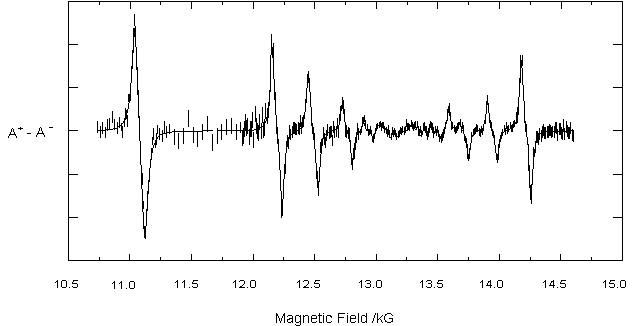Research Interests: Physical Chemistry and Muonium Chemistry
Muonium (Mu) is the exotic atom consisting of a single electron and a positive muon. From a chemical point of view, muonium is a light isotope of hydrogen; its mass is 1/9 that of H. Our experimental program is conducted at the TRIUMF accelerator facility (see also CMMS at TRIUMF), one of the few places in the world where high intensity muon beams are available. The muon lifetime is short (2.2 µs), and measurements involve particle physics, fast electronics and computers. However, the experimental techniques muon spin rotation (µSR), muon level-crossing resonance (µLCR) and rf-µSR, all have close parallels in conventional magnetic resonance (NMR and ESR). Our research group involves the application of these spectroscopic methods to problems of chemical interest not readily studied by more conventional means. These include:
- H atom kinetics in superheated water, of relevance to development of a supercritical-water-cooled nuclear power reactor;
- free radical chemistry of organic molecules containing low-valent main-group elements (Si, Ge, P);
- structure and dynamics of free radicals ranging from methyl to Mu adducts of fullerenes and polyaromatic hydrocarbons;
- free radical chemistry in the nanoscale cavities of clathrate hydrates.
The spectrum below is an example of our work. Analysis of the resonances provides information on the unpaired spin distribution in the free radical formed when Mu (or H) adds to C60.
MuLCR spectrum of 13C60Mu

